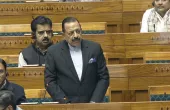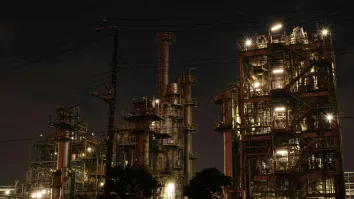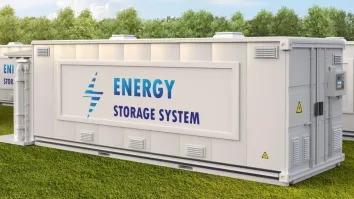Vietnam's Solar FIT 2 and Overcoming Financing Challenges
By Bree MiechelThis article was co-authored by Hugo Le Ridou, Reed Smith.
On 12 April 2019, the Ministry of Industry and Trade of Vietnam (MOIT) published the final draft decision of the prime minister, intended to replace the current Decision 11 promoting the development of solar power plant projects in Vietnam. The final draft of the decision has extended the duration of the second feed in tariff (FIT), from 1 July 2019 to 31 December 2021 (FIT 2 Deadline).
Whilst the first round FIT provided for a single 9.35 cents per kWh tariff, the draft decision, in its current form, has differentiated tariff levels according to the type of technology used on a solar project, and its location: the MOIT has divided Vietnam into four regions, based on irradiance levels. Projects completed in regions with lower irradiance will be granted a higher tariff, in an effort to encourage solar projects in Vietnam’s Northern provinces.
The final draft made a number of improvements to the draft decision compared to the second draft published on 22 February 2019, notably extending the commercial operation deadline to 31 December 2021 (FIT 2 Deadline) (in contrast with 30 June 2021) and increasing tariff rates for floating solar projects (compensating the relatively higher project costs).

Bankability issues surrounding the Standard Solar PPA
To accompany FITs, the MOIT issued the Standard Power Purchase Agreement for Solar Projects (Standard Solar PPA) in September 2017. The Standard Solar PPA is relatively short compared to conventional solar project PPAs, and departed from international market standards, raising a number of bankability issues, notably:
- Off-taker obligations and Government guarantees: there are no “take or pay” provisions governing compensation if Vietnam Electricity (EVN), as sole off-taker, fails to take the electricity (by its own failure to cooperate or otherwise). EVN’s obligations are further not guaranteed by the government, exposing projects to EVN payment risk.
- Commissioning risk: in order to qualify for the FIT, the project would need to achieve the commercial operation date by the FIT 2 Deadline, without any allowance for commissioning delays attributable to EVN.
- Force majeure: similarly, EVN’s obligations are suspended in a number of force majeure circumstances, as well as interruptions and outages due to grid overhauls and maintenance by EVN.
- Termination payments: in the event of EVN’s default, there are no specific provisions regarding the calculation of damages, which are therefore governed by Vietnamese law. These are limited to the value of the actual electricity output in the termination year, and are unlikely to fully compensate investors.
- Currency fluctuations: the FIT is payable in Vietnamese dong, adjusted only annually based on the State Bank of Vietnam’s VND/USD exchange rate, presenting a risk for repayment of USD denominated debt. The Standard Solar PPA further does not contain an indexation clause to protect investors against increased costs or inflation.
- Dispute resolution: the governing law is Vietnamese law and Vietnamese courts have exclusive jurisdiction. There are no provisions for international arbitration.
Practical solutions to the PPA bankability issues
Whilst such concerns are widely acknowledged, the general consensus remains that the FIT offers an attractive incentive to invest in Vietnam’s solar power industry, with the first round FIT having already generated significant market interest.
Although one project has been able to obtain amendments to the Standard Solar PPA to address some of the bankability issues, most project sponsors will not be in a position to obtain such concessions. In order to mitigate the bankability risks posed by the Standard Solar PPA and facilitate funding for the development of solar PV projects in Vietnam, several practical solutions have and are being explored:
- Local bank letter of credit
With the exception of regional banks, to date international commercial banks have not participated in project finance lending to Vietnamese solar PV projects owing to the concerns raised above. One structure developed to insulate international commercial banks from EVN payment risk and allow participation in the market, includes lending by to a top tier Vietnamese bank secured against a Letter of Credit effectively guaranteeing EVN’s payments under the PPA as well as the full amount of project debt outstanding in the event of a payment default by the project company. The local bank would be granted rights of recovery over the project’s assets and cash flows up to the amount of debt which they are securing. Non-payment insurance would be procured to cover the Letter of Credit issued by the local bank.
The rationale for this structure is that the Vietnamese banks are eager to partner with sponsors, who are often key clients for the local banks, and are also better placed to assess project risk and manage local relationships.
There is consensus amongst lenders and insurers that insurance cannot replace a long-term solution to the bankability issues of the Standard Solar PPA. Some reservations regarding this insurance solution include the reliance by the bank on insurance without (i) strong knowledge of the asset, (ii) comfort on the contractual (PPA) structure, and (iii) any ability to play a role if the project performs badly. However, the cost of insurance is offset by the prospective rate of return offered by the FIT, allowing sponsors and lenders to explore such a strategy. One further mitigant considered is lending to local banks against a portfolio of projects and thereby mitigating risks such as curtailment of specific projects within the portfolio.
A similar product to the above is also being developed by multilateral banks however without the same level of risk transfer. The product contemplated would cover EVN non-payment risk but not shield international commercial lenders from the other underlying bankability concerns under the PPA.
- EPC contractor financing
To circumvent the need for project level bank financing, the EPC contractor can fund the development of the project and recover these costs out of the project revenue following commercial operation of the power plant. Where this structure is adopted, the contractor has applied a significant premium of approximately 20% - with the opportunity to supply its own modules and inverters to the project – with the anticipation of being repaid within the first few years of operation. EPC contractors have also accepted liability for commissioning of the project by the FIT deadline. Subject to appropriate transmission infrastructure being in place, the EVN risk of curtailment is potentially lower in the early years, before competitor projects come online and potentially lower tariffs are implemented. Despite the premium charged by the EPC contractor, who benefits from a very favourable position, the attractive FIT and fast growing energy demand in Vietnam (around 12% per year) are attractive enough to incentivise investment.
Some structures in other markets have seen the EPC contractor bear significantly more risk – they are provided with a minimal down payment from the owner (around 15% of project costs), with the remainder payable on commercial operation but only if the financing is in place or the power plant has been sold. In this case, the EPC contractor is entitled to project revenue and if not repaid, can enforce its comprehensive security package. However, Vietnamese law does not allow foreign persons to take security over land, which could prove to be a barrier for such a structure.
Conclusion
Despite the bankability issues of the Standard Solar PPA, the attractive FIT and strong growth of Vietnam’s energy needs should continue to spur investor interest, who can look to the solutions discussed to mitigate the project risks.
Looking ahead, Reed Smith are currently partnering with a leading intergovernmental organisation focusing on sustainable energy transition, as part of a team of international law firms, banks and other industry advisors to design a standardised suite of contracts for the development, financing, and procurement of solar energy projects. The suite aims to homogenise market practices, whilst providing for a balanced allocation of risk between parties, paving the way for lower feed-in tariff rates at a level of risk still acceptable for all parties involved.




















 Advertise
Advertise






